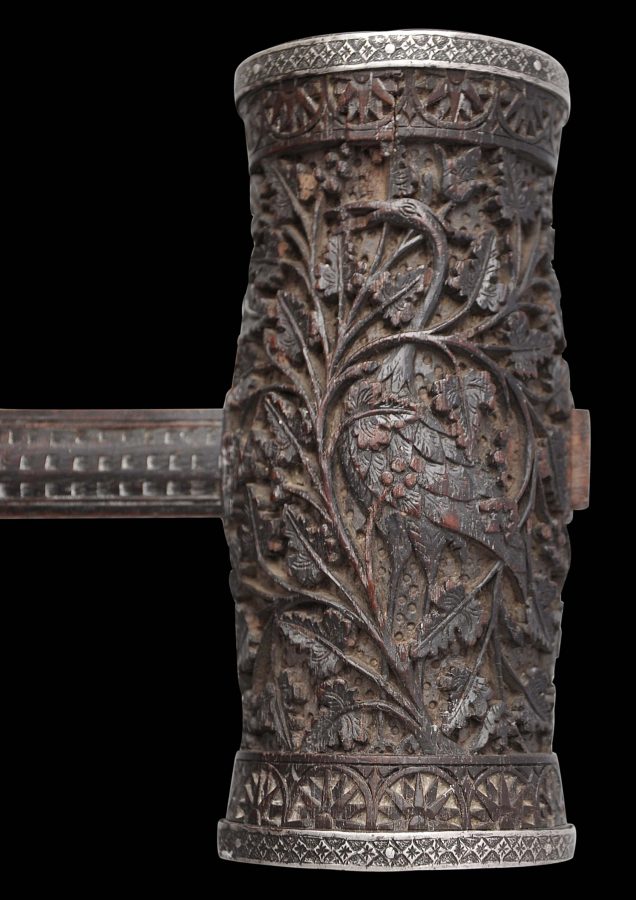Enquiry about object: 1714
Rare Colonial Indian Carved Croquet Mallet with Chased Silver Mounts
Bombay, India 19th century
length: 86cm, width of head: 14.8cm
Provenance
UK art market
A more emblematic relic of the British colonial era in India than this carved croquet mallet is difficult to imagine. Beautifully carved in reddish blackwood, the mallet comprises a long handle, carved on both sides with a scale-like motif, and a cylindrical head carved on both sides with long-necked birds amid ample leafy shrubbery. Both edges of the head are encased in silver mounts chased with geometric diamond designs and secured with silver pins.
Woodworking in Bombay in the nineteenth century was dominated by Parsee carpenters and shopkeepers who employed Moslem Gujarati carvers. The Parsee community in Bombay identified strongly with the British and adopted many British customs not unlike the Straits Chinese in Singapore. Blackwood from the Malabar Coast was the typical wood used. Furniture was the chief output and was known for its intricate all-over carving that tended to comprise dense foliage occasionally interspersed with animals, birds and sometimes mythical creatures. Examples of carved Bombay furniture were exhibited at the Great Exhibition of 1851 in London.
We are not aware of another Indian croquet mallet having been published. This example has a warm patina; its age is obvious, and its condition is fine with few or no obvious losses to the carving.
References
Jaffer, A., Furniture from British India and Ceylon: A Catalogue of the Collections in the Victoria and Albert Museum and the Peabody Essex Museum, Timeless Books, 2001.




